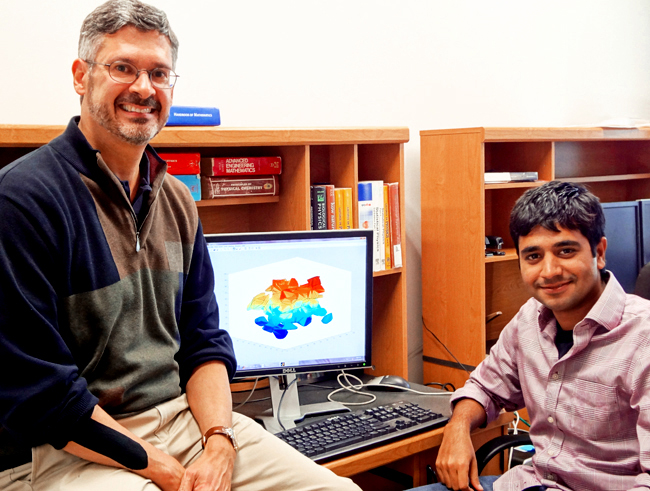Potential for a new perspective on diagnosing, predicting and treating cancer may result from a research study involving 3-D models showing the mechanical property changes that a cancer cell undergoes, said Chemical Engineering Department chair Roger Bonnecaze.
“What’s really interesting about this work is it provides a unifying perspective to think about cancer,” Bonnecaze said.
Bonnecaze said the 3-D model was built relying on knowledge from previous studies which show that cancer cells are softer than healthy cells — they bind differently — and that cells die or divide depending on how stretched or confined they are.
“We decided to put all those elements together in a computational simulation to see how those work together for tumors to grow,” Bonnecaze said.
Bonnecaze said the 3-D model showed that multiple cancer cells together cause healthy cells to die because the healthy tissue becomes confined, while the cancer cells continue to grow.
“So what happens is the cancerous cells tend to multiply while the healthy tissue tends to die,” Bonnecaze said.
Bonnecaze also said due to the fact that cancer cells bind less, it is easy for cancer cells to break free and spread to other organs.
Bonnecaze said while cancer is still ultimately caused by genetic and environmental factors, this study showed how mechanical changes are a proximate cause of cancer.
“In order for tumor growth to occur, the cancer cells need to undergo these mechanical property changes — these binding changes,” Bonnecaze said.
Postdoctoral fellow Parag Katira, who worked on the study along with Bonnecaze and Muhammad Zaman of Boston University, said they are working on doing more research to get more experimental verification.
“We are extending the study to actually stimulate even more things seen in cancer,” Katira said.
But after everything is verified, Katira said researchers will be able to focus on manipulating the mechanical properties of cells to limit cancer progression, predict tumor growth and even kill cancer cells.
“Based on how different the mechanical properties of the cells are you can predict how fast the tumor is going to grow and where it is going to spread, and also you can find different ways to treat it,” Katira said.
Biology sophomore Anita Santpurkar said she feels cancer research is moving forward with the emergence of this and similar new studies.
“There is so much research and infrastructure being put in to it,” Santpurkar said. “We’re headed in a good way.”
Printed on Wednesday, February 1, 2012 as: Study offers new perspective on treating, diagnosing cancer





















